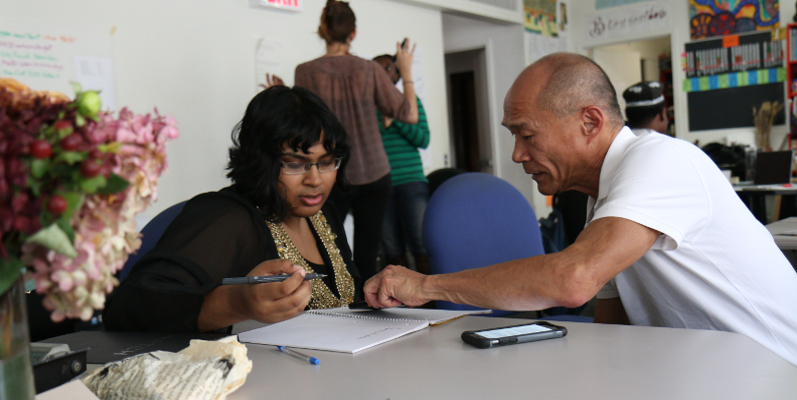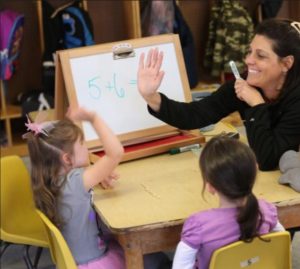With this post, the five-part series on creating an environment that supports strategy transfer comes to an end. That would be the end of the blog series—not the conversation, however. There is much more to discuss. (You can read the first four in this series here, here, here and here.)
In this final piece on strategy transfer, I want to share a few ideas about what John Hattie says is “one of the top 10 influences on achievement”. With an effect-size of .79, feedback has “twice the average effect of all other schooling effects.” As we’re teaching students (regardless of their age or grade) to read, we want to provide feedback that transforms the learner.
Defining Feedback
Feedback is defined as response given by an outside means delivering information about one or more aspects of an individual’s performance. The correct type of feedback helps students to identify where they are in a process of learning compared to where they ought to be.
Powerful Guidance for Students; The Three Feedback Questions
There are critical questions that guide effective feedback for the learner; “where am I going? “, “how am I going”, and “where to next?”.
“Where am I going?” is best answered by helping students set reasonable goals and monitor their progress toward those goals. Feedback directed at answering this question supports students in being able to adjust their effort, focus and strategy use in reaching the desired goal. Goals without clear criteria for attainment handicap our students in their ability to experience success.
Feedback in relation to where a student is going actually begins with clearly defined success criteria. Students need an exemplar, a precise (albeit simple) rubric or a checklist with clear expectations for mastery of the learning task. (I love this video from the NSW Department of Education celebrating student success due to Teacher Clarity—clear and attainable levels of achievement.)
“How am I going?” entails feedback that shows the progression toward the end point of the learning task. Answering this question by way of feedback provides the student with information on their progress in relation to the learning outcome, or their mastery (or not) on a specific element of the task.
“Where to next?” feedback supports students in knowing where to go next. Should the student be more self-regulatory in regard to which strategies to use when and why? Should the student change behaviors in order to see more fluency and automaticity in a given task? Is there something more required that would take the student to deeper, more critical thinking about the content they are learning? All these questions can be answered through appropriate feedback that guides the student in the “next steps” of their learning.
Four levels of Feedback
In addition to the questions that guide appropriate feedback that allows students to close the gap between where they are and where they should be, there are four levels of feedback:
- Feedback about the task–How well has the task been performed? “This is incorrect. The assignment (your goal) was to list all the reasons why the main event happened. Your second point is unclear. Change the wording so that your reasons are more clear to the reader.”
- Feedback about the process–What are the strategies needed to perform the task. Are there alternative strategies? “I can see that you got stuck with just one category for your word sort. What is another way you can solve your problem? Are you seeing other letter combinations besides the one included in the one category you’ve listed and what will you do to show those?
- Feedback that leads to self-regulation–What’s the conditional knowledge needed? “When you got frustrated with trying to use the new strategy to identify theme today, you changed direction and used the “bullseye” strategy we learned a few weeks ago. That seemed to get you back on track with your goal of identifying theme in this literary text. Explain how your choices made that work for you.”
- Feedback about self–Personal evaluation and affect about the learning. “Excellent job! You are such a strong reader!”
The first three types of feedback provide a progressive sequence for effective self-reflection and action on the student’s part. Students receive information on whether or not the learning is correct (task), the effectiveness of steps executed in the right order and the appropriate way (process), and the degree to which they are independently in charge of and “metacognitive” (self-regulation) in regard to their application of appropriate strategies for the learning goal.
It’s imperative that teachers seek out opportunities for the first three types of feedback when communicating with students. The fourth type of feedback (self) contains no valuable information about the task and does not translate to how students are to engage more directly in the learning, enhance their self-autonomy or deepen their understanding of the academic content. Hattie warns that feedback at the self-level negatively affects the student’s progress toward the learning goal as it focuses more on the student than mastery of the learning.
Most teachers find themselves longing for the most effective system possible for creating an environment in which students can independently and successfully employ comprehension strategies to make meaning of texts. I believe, and have seen evidence myself that when we create a system of coaching students to be the reading expert, teach a repertoire of powerful, research-based strategies, commit to an all-out emphasis on conditional knowledge and provide feedback that transforms the learner we have done our very best work in growing independent, autonomous readers.
And that, my dear colleagues, is our most revered calling as” teachers of readers”.











